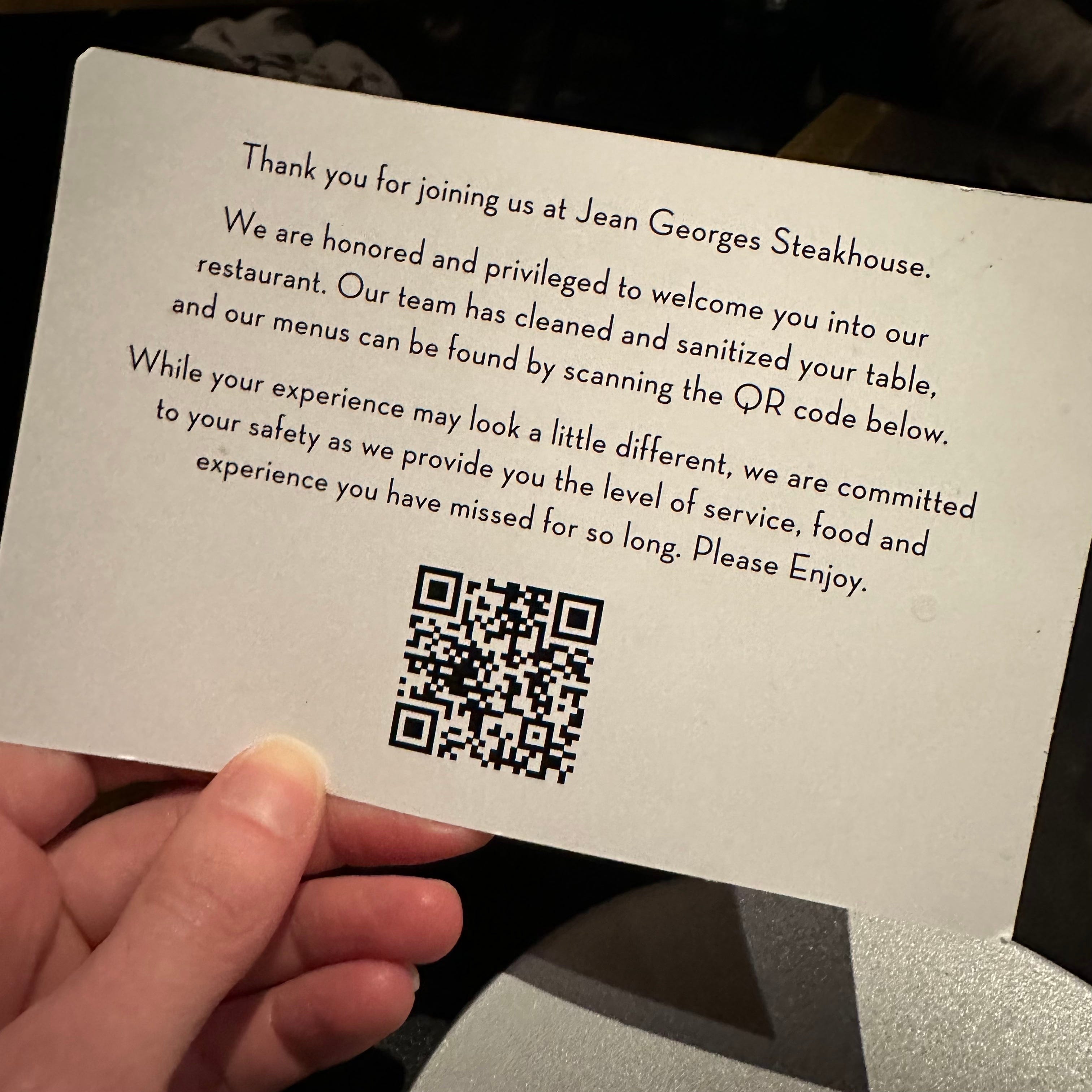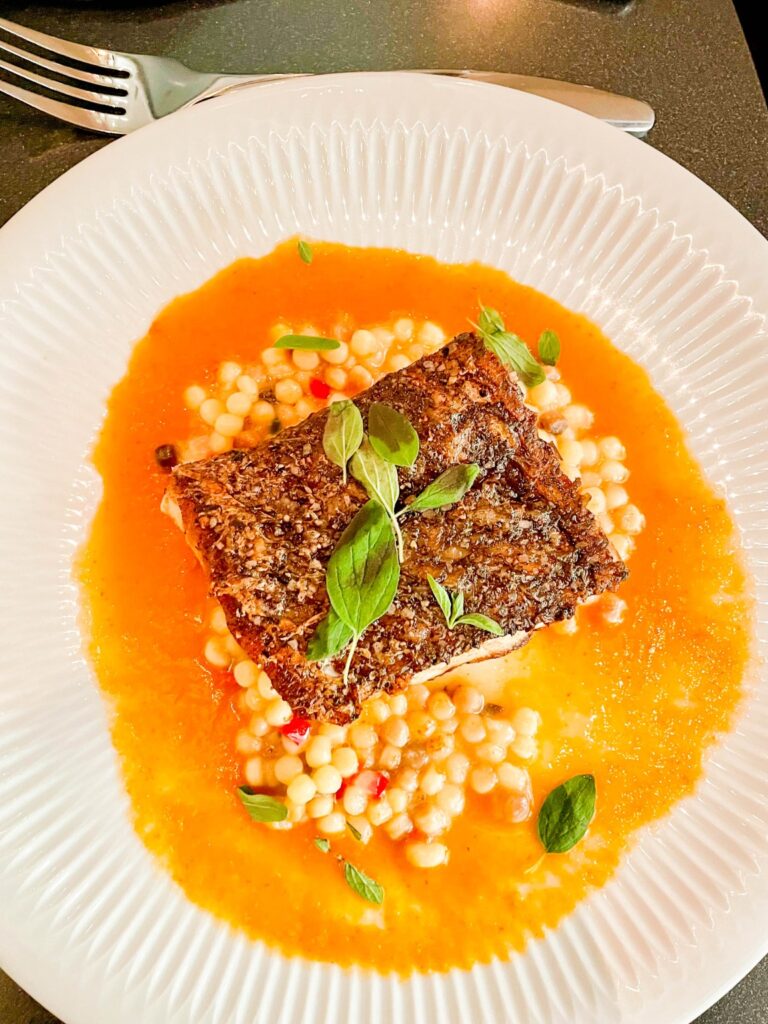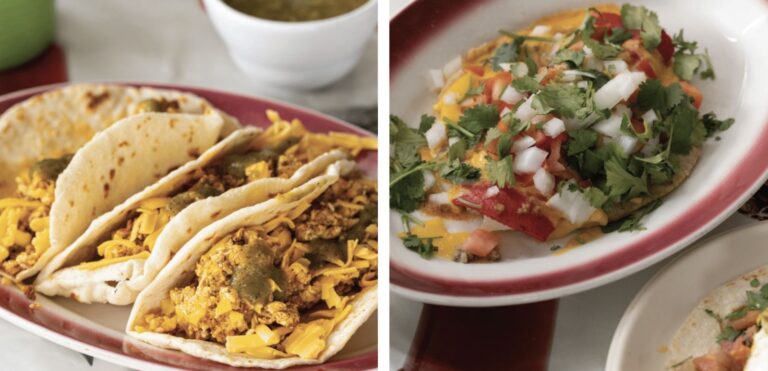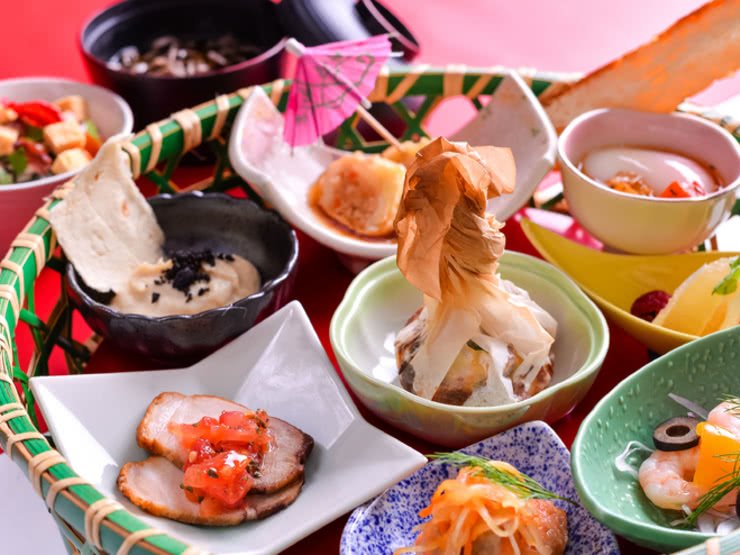What QR Codes at Restaurants Lead to NYT: Discover Hidden Insights
QR codes at restaurants lead to digital menus, contactless payment options, and promotional offers. They enhance customer experience by providing easy access to information.
QR codes have become a significant part of the dining experience. Restaurants use them to offer digital menus, which customers can access by scanning the code with their smartphones. This reduces physical contact and helps maintain hygiene standards. QR codes also streamline the payment process, allowing for quick, contactless transactions.
They can link to special promotions or loyalty programs, enhancing customer engagement. By integrating QR codes, restaurants not only improve operational efficiency but also provide a safer and more interactive dining experience. This technology is transforming the way we interact with restaurants, making it more convenient and enjoyable.

Rise Of Qr Codes
The use of QR codes has exploded in recent years. Especially in restaurants, they offer a touchless way to access menus. This trend has changed how people dine out.
History And Evolution
QR codes first appeared in the 1990s. They were invented in Japan. Originally, they tracked car parts. Over time, their use expanded. Today, they store various types of information.
Initially, QR codes struggled to gain popularity. People found them confusing. Smartphones lacked the technology to scan them. As phone cameras improved, QR codes became easier to use. Now, they are everywhere.
Pandemic Influence
The COVID-19 pandemic changed many things. It made contactless solutions necessary. Restaurants adopted QR codes to keep customers safe. Using QR codes reduced contact with physical menus.
Scanning a QR code with a phone camera is simple. It opens a digital menu. This method keeps diners and staff safer. It also reduces waste from disposable menus.
Many people prefer using digital menus. They are easy to update. Restaurants can quickly change items or prices. QR codes provide a modern dining experience.
How Qr Codes Work
QR codes at restaurants are changing how we order food. They make the process faster and safer. But how do these little squares of code work?
Technology Behind
QR codes use a grid of black and white squares. These squares hold data. A smartphone camera scans the code. The phone then translates the grid into useful information.
The data could be a URL, text, or other information. QR codes can store more data than traditional barcodes. They can hold up to 7,000 characters.
QR codes are read using vertical and horizontal patterns. This makes them more versatile than barcodes. They can be scanned from any direction.
Types Of Qr Codes
There are two main types of QR codes: static and dynamic.
- Static QR Codes: These codes have fixed information. Once created, the data cannot be changed. They are used for simple tasks like linking to a URL.
- Dynamic QR Codes: These codes can be updated. You can change the data without changing the QR code itself. They are useful for marketing campaigns.
Here is a table to summarize the differences:
| Type of QR Code | Features |
|---|---|
| Static QR Code | Fixed data, cannot be changed, simple tasks |
| Dynamic QR Code | Data can be updated, flexible, used in marketing |
Restaurants often use dynamic QR codes. This allows them to update menus easily. They can add new items or change prices quickly.
Understanding these types helps you know how QR codes work. This technology is making dining out more efficient and enjoyable.
Benefits For Restaurants
QR codes at restaurants are transforming the dining experience. They offer several benefits for establishments. These digital tools streamline operations and enhance customer satisfaction.
Contactless Menus
With QR codes, restaurants can provide contactless menus. Diners simply scan the code with their smartphones. This reduces the need for physical menus.
Contactless menus are more hygienic. They help prevent the spread of germs. This is especially important during health crises.
Restaurants can update their digital menus easily. There’s no need to print new menus. This saves time and money.
Enhanced Customer Experience
QR codes improve the overall customer experience. Diners can view the menu at their own pace. They can take their time to decide.
Customers can access additional information. This includes dish descriptions, ingredient lists, and allergen info. Transparency builds trust and loyalty.
QR codes can also link to special promotions. Diners can see offers and discounts. This encourages them to try new dishes.
Here are some key benefits summarized in a table:
| Benefit | Description |
|---|---|
| Hygiene | Reduces physical contact with menus. |
| Cost Efficiency | Saves on printing new menus. |
| Customer Trust | Provides detailed dish information. |
| Promotions | Highlights special offers and discounts. |

Customer Data Collection
QR codes at restaurants are more than just a menu shortcut. They offer a way to gather valuable customer data. This data helps restaurants improve service and marketing strategies. Let’s explore the types of data collected and the privacy concerns involved.
Types Of Data Collected
Restaurants collect various types of data through QR codes. Here’s a breakdown:
- Contact Information: Names, phone numbers, and email addresses.
- Order History: Items ordered, frequency of visits, and spending habits.
- Feedback: Customer reviews, ratings, and comments.
- Location Data: Geographical location of the customer.
Collecting this data helps restaurants understand their customers better. It allows for personalized promotions and improved customer service.
Privacy Concerns
While data collection offers many benefits, it raises privacy concerns. Customers worry about how their data is used and stored. Here are some common concerns:
- Data Security: Fear of data breaches and unauthorized access.
- Data Sharing: Concerns about data being shared with third parties.
- Transparency: Lack of clear information on data usage.
Restaurants must be transparent about their data policies. They should ensure that customer data is secure and only used for stated purposes.
Integration With Nyt
The integration of QR codes at restaurants with NYT offers a modern dining experience. By scanning QR codes, diners access exclusive content from the New York Times. This innovative approach enhances the dining experience, providing easy access to premium content.
Content Accessibility
QR codes make content access seamless and immediate. Diners scan the code and get direct access to the NYT articles. This eliminates the need for manual searches, saving time. The QR codes link to various sections of the NYT, such as:
- News
- Opinion
- Arts
- Food
This variety ensures that diners find something of interest. The process is simple and user-friendly.
User Engagement
Integrating QR codes with NYT boosts user engagement. Diners interact more with the content, enhancing their experience. Restaurants can track which articles are most popular, using this data to improve services.
Engagement metrics include:
- Click-through rates
- Time spent on articles
- Shared content
These metrics help restaurants understand their customers better. This leads to a more personalized dining experience.
Marketing Opportunities
QR codes at restaurants provide exciting marketing opportunities. They offer a way to engage with customers in unique ways. Restaurants can boost their presence and customer loyalty.
Targeted Promotions
Restaurants can use QR codes for targeted promotions. By scanning the code, customers access exclusive deals. These deals can be tailored to specific times or events.
For example, a restaurant might offer:
- Discounts on special menu items
- Happy hour offers
- Seasonal promotions
This approach ensures that the promotions are relevant. It increases the likelihood of repeat visits.
Customer Loyalty Programs
QR codes simplify customer loyalty programs. Customers can scan a code to earn points or rewards. This process is quick and easy, encouraging participation.
Here’s a sample loyalty program structure:
| Visit | Reward |
|---|---|
| 1st Visit | Free drink |
| 5th Visit | 10% off |
| 10th Visit | Free dessert |
Such programs make customers feel valued. They also encourage them to return.
Challenges And Limitations
QR codes in restaurants offer many benefits. But there are some challenges and limitations. Understanding these issues helps in better implementation.
Technical Issues
Technical issues can make QR codes less effective. Internet connectivity is a common problem. Not all areas have strong internet signals. This affects how quickly a QR code loads.
Hardware compatibility is another issue. Some older phones may not scan QR codes. This can frustrate users. Updating the restaurant’s system can be costly.
Security risks are also a concern. Hackers can replace genuine QR codes with fake ones. These fake codes can lead to malicious sites. This compromises user data.
User Resistance
User resistance is a major challenge. Some people are not comfortable with technology. They find QR codes confusing or hard to use.
Older customers may resist using QR codes. They prefer traditional menus. This can lead to dissatisfaction.
Privacy concerns also cause resistance. Users worry about sharing personal information. They fear their data might be misused.
Table showing common user concerns:
| Concern | Reason |
|---|---|
| Confusion | Not tech-savvy |
| Preference | Like traditional menus |
| Privacy | Fear of data misuse |
Social factors play a role too. Some people feel uncomfortable using phones in social settings. They feel it is rude or impersonal.
Future Trends
QR codes in restaurants have become mainstream. They offer a touchless way to access menus, make payments, and even leave reviews. The technology continues to evolve, and future trends are set to make QR codes even more integral to dining experiences.
Innovations In Qr Technology
Innovations in QR technology are driving these changes. New developments aim to make QR codes more user-friendly and interactive.
- Dynamic QR Codes: These codes can change their destination URL in real-time. This allows restaurants to update menus without printing new codes.
- Customizable QR Codes: Businesses can now design codes that match their branding. This makes the dining experience more personalized.
- Augmented Reality (AR) Integration: Imagine pointing your phone at a QR code and seeing a 3D model of your dish. AR integration can make this possible.
Potential Developments
The potential developments in QR technology are vast. These advancements promise to enhance the customer experience significantly.
| Development | Description |
|---|---|
| Blockchain Integration | Secures transaction data, ensuring safe and transparent payments. |
| AI-driven Analytics | Analyze scan data to understand customer preferences better. |
| Voice-Activated QR Codes | Use voice commands to interact with QR code functionalities. |
These trends and developments indicate a bright future for QR codes in restaurants. They will make dining more interactive, secure, and customized.

Frequently Asked Questions
What Are Qr Codes At Restaurants?
QR codes at restaurants are scannable barcodes. They provide digital menus, ordering options, and payment methods. This enhances customer convenience.
How Do Qr Codes Improve Dining Experience?
QR codes streamline the dining process. They offer quick access to menus and contactless payments. This reduces wait times and enhances convenience.
Why Are Qr Codes Popular In Restaurants?
QR codes are popular for their efficiency. They reduce physical contact, speed up service, and offer a modern dining experience.
Can Qr Codes Link To Nyt Articles?
Yes, QR codes can link to NYT articles. Restaurants use them to share relevant news, updates, or promotional content with diners.
Conclusion
QR codes at restaurants enhance customer experience and streamline operations. They provide quick access to menus and more. Leveraging this technology can boost efficiency and satisfaction. Stay ahead by integrating QR codes into your restaurant’s strategy. Embrace the digital shift for a seamless dining experience.



